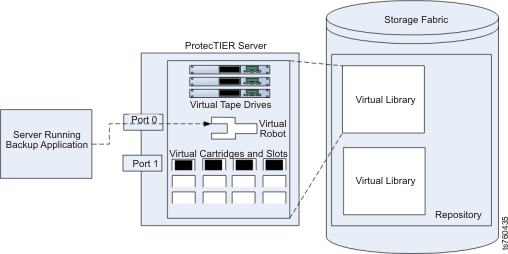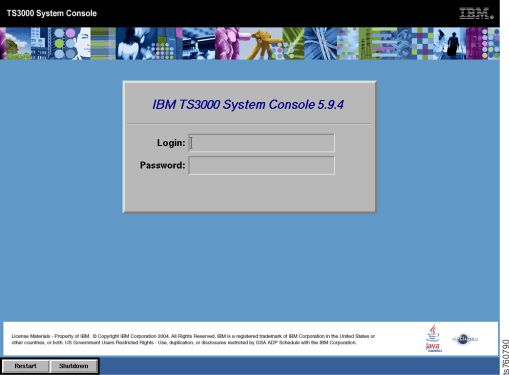Software for the TS7650G
Several software applications run on various TS7650G components and configurations.
ProtecTIER® is a disk-based data storage system. It uses data deduplication technology to store data to disk arrays. With Feature Code 9022, the ProtecTIER Virtual Tape Library (VTL) service emulates traditional automated tape libraries. With Feature Code 9024, a stand-alone TS7650G can be configured as FSI.
ProtecTIER Manager
The ProtecTIER Manager workstation is a customer-supplied workstation that runs the ProtecTIER Manager software. The ProtecTIER Manager software provides the management GUI interface to the TS7650G.
System requirements for the workstation are provided in this document in ProtecTIER Manager workstation requirements for the TS7650G.
Complete information about installing and operating the ProtecTIER Manager workstation is provided in the IBM ProtecTIER User's Guide for VTL Systems, GA32-0922.
ProtecTIER VTL
The ProtecTIER VTL service emulates traditional tape libraries. By emulating tape libraries, ProtecTIER VTL provides the capability to transition to disk backup without having to replace your entire backup environment. Your existing backup application can access virtual robots to move virtual cartridges between virtual slots and drives. ProtecTIER presents virtual tape cartridges to the backup application as the storage medium while actually transferring data to and from a deduplicated repository on disk storage. ProtecTIER supports an absolute maximum of 62,000 virtual cartridges, slots, and tape drives, although the maximum number might be lower for individual systems because of available storage space.

FSI
When configured for FSI, ProtecTIER emulates a NAS backup target that is capable of using both HyperFactor® and ProtecTIER replication bandwidth reduction techniques for storing and replicating deduplicated data. ProtecTIER FSI enables servers that run backup applications to connect over IP networks to ProtecTIER servers without Fibre Channel connections, and permits the use of existing tools and capabilities to integrate a ProtecTIER NAS-based backup target into your environment.
- Sixteen-way, many-to-many, replication topology groups
- Creation of backup images that are produced by backup applications (not intended for primary storage deduplication)
- File system access security by using a Microsoft workgroup domain (default) or Active Directory domain
- The maximum number of concurrent streams and host connections
that are listed in Table 1Restriction: Because backup applications might assign a backup job to more than one stream, the maximum number of backup jobs available at your installation might be lower than the maximum number of streams that are supported by FSI listed in Table 1.
Table 1. Maximum number of FSI streams and host connections Maximum number of concurrent... For the 3958 DD5 server streams 192 host connections 64
ProtecTIER exposes virtual interfaces to the host, such as a media server with the plug-in installed. In version 3.4.3, the physical Ethernet ports are assigned to one virtual application interface. Currently, the physical ports are assigned to virtual interface eth0 or eth1, depending on the server configuration. This assignment option is used to group several physical interfaces into a single virtual interface, and create a bond configuration of several physical interfaces. Each virtual interface used must be configured with a corresponding IP address.
In addition, each virtual interface containing more than one physical interface (configured as a bond) needs to be configured with a load balancing method. For a server with 10 Gb interfaces, where bonding is implemented, the recommended load balancing method is Link Aggregation Control Protocol (LACP) with L3L4.
For more information about bonding, the different load balancing methods, and whether to configure bonds at all, refer to the IBM ProtecTIER Implementation and Best Practices, Redbooks publication SG24-8025, available at: http://www.redbooks.ibm.com/Redbooks.nsf/RedpieceAbstracts/sg248025.html?Open or the IBM ProtecTIER Implementation and Best Practices, Redbooks publication SG24-8025, available at: http://www.redbooks.ibm.com/Redbooks.nsf/RedpieceAbstracts/sg248025.html?Open.
TSSC microcode
If you are using an existing TSSC, before you install or upgrade ProtecTIER, the TSSC microcode must be 7.0.x or later. To check the version, go to the TS3000 System Console Screen Login screen as shown in Figure 2.

If an update is required, contact IBM® Service.